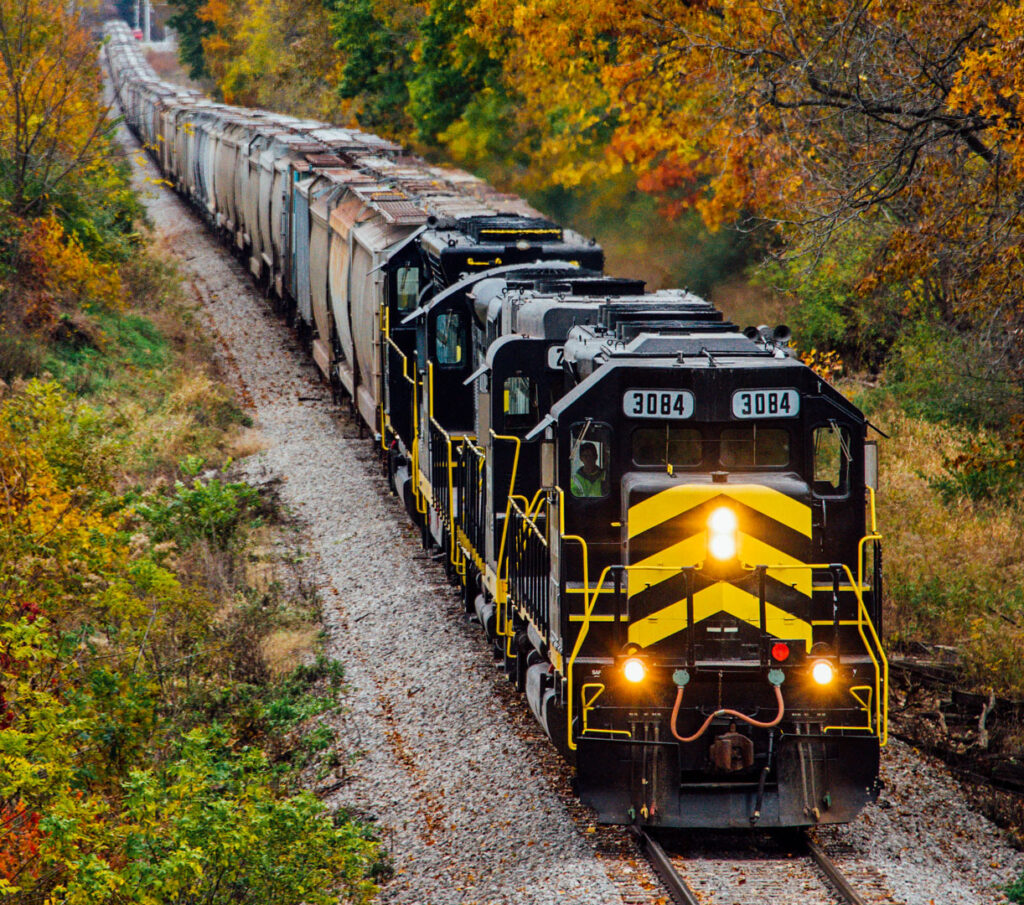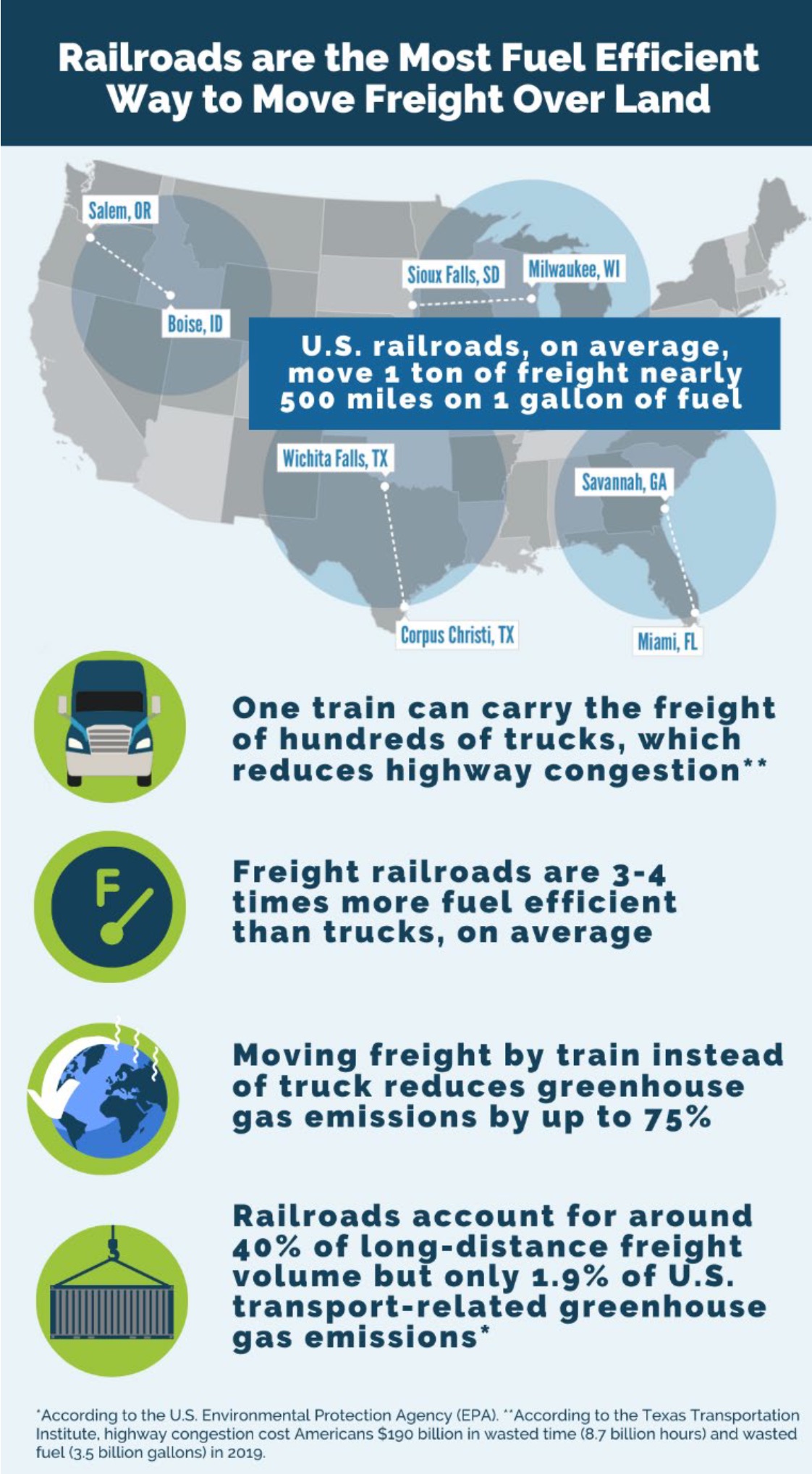The Indiana Northeastern Railroad Company keeps over 10,000 trucks off the highways every year. From our railroad, one ton of freight can travel over 500 miles on one gallon of fuel, creating safer, less congested, and more productive industries.
The Indiana Northeastern Railroad Company is a short-line railroad connected to a massive supply chain industry that has evolved over the last two centuries to serve the needs of a growing economy with safe, efficient service that invests in the communities to serve, reduces energy consumption, and reduces emissions and waste.
 Here are some facts about the freight rail industry’s impact on the environment – and how your business can ship by rail in a way that is cost-effective and sustainable.
Here are some facts about the freight rail industry’s impact on the environment – and how your business can ship by rail in a way that is cost-effective and sustainable.
HOW RAILROADS HELP PRESERVE THE ENVIRONMENT– from the American Association of Railroads
Less Greenhouse Gas Emissions: Greenhouse gas emissions are directly related to fuel consumption. According to EPA data, freight railroads account for just 0.5% of total U.S. greenhouse gas emissions and just 1.9% of transportation-related greenhouse gas emissions.
More Fuel Efficient: Freight rail is ahead of other land modes of surface transportation when it comes to limiting its carbon footprint. U.S. freight railroads, on average, move one ton of freight nearly 500 miles per gallon of fuel.
Sustainable Choice: If 25% of the truck traffic moving at least 750 miles went by rail instead, annual greenhouse gas emissions would fall by approximately 13.1 million tons; If 50% of the truck traffic moving at least 750 miles went by rail instead, greenhouse gas emissions would fall by approximately 26.2 million tons.
Holistic Approach: In 2021 alone, U.S. freight railroads consumed 790 million fewer gallons of fuel. They emitted nine million fewer tons of carbon dioxide than they would have if their fuel efficiency had remained constant since 2000.
Reducing Highway Congestion & Pollution: Railroads help reduce the huge economic costs of highway congestion. According to the Texas Transportation Institute’s 2019 Urban Mobility Report, highway congestion cost Americans $166 billion in wasted time (8.8 billion hours) and fuel (3.3 billion gallons) in 2017. Lost productivity, cargo delays, and other costs add tens of billions of dollars to this tab. A single freight train, though, can replace several hundred trucks, freeing up space on the highway for other motorists. Shifting freight from trucks to rail also reduces highway wear and tear and the pressure to build costly new highways. On average, railroads are three to four times more fuel efficient than trucks. That means moving freight by rail instead of truck lowers greenhouse gas emissions by up to 75%, on average.

